DXpedition: Baker Island!
For the last month, NAI’A has hosted the most unusual of charters and what a fascinating time we have had! We can proudly say that we have successfully facilitated the expedition of 14 HAM radio operators to the remote US-outlying island of Baker, allowing them to set up camp and communicate with the outside world for 10 days.
For those who know nothing about ham radio (which included ourselves, not so very long ago!!), allow us to explain…. Globally, there are literally millions of individuals who dabble in amateur radio as a bit of a hobby, their mission being to make contact with other operators across the world. Amongst those millions, there are a select few – ‘the HAM elite’ of perhaps 200 individuals – who take it a HUGE step further and organize expeditions (known as DXpeditions) to wildly remote locations. There is a list of ‘desirable’ locations to broadcast from and, very close to the top of that list, you will find a teeny tiny dot of an island just 12 miles north of the Equator in the heart of the Pacific Ocean: Baker Island. It has been over ten years since anyone operated from this sandy speck of land and so a group of these HAM elite got together and decided it was about time to send a team there!
Islands don’t come much more remote than Baker! At just 2.6 miles around and completely flat with limited natural resources (no fresh water, for example), it is totally uninhabited by humans and has been that way for many decades. Yet for such a small place, it has a very colorful history! In the mid 19th century, Baker was claimed by both the British and the United States as they exploited it for guano mining (there is an enormous resident bird population on the island, a fact we shall return to in more detail later). Later, in the 1930s, young native Hawaiians were brought over in an experiment to settle Baker: in those days, residency was essential in order to claim land and Hawaiians were considered the ‘best suited’ to thrive in the island’s conditions. It was claimed the island was being populated as it may be useful for commercial aviation: it is more likely, however, that with global political tensions rising it was, in fact, the military that had their eye on it. During WW2, the Japanese bombed Baker and its neighbors, Jarvis and Howland, as they returned from Pearl Harbor. The US extracted their people from the island and it has remained inhabitant-free ever since. Nowadays, Baker is protected by the US Fish and Wildlife Service (USFWS) and humans are not allowed to set foot on it without express permission, granted after going through an extensive, detailed application process. The group of HAM radio operators organizing this DXpedition successfully gained the right to access the island for a limited period of time to undertake their mission. They were joined on the island by Allie, a resource monitor for USFWS, who made sure their project had minimal negative impact on the island and its wildlife.
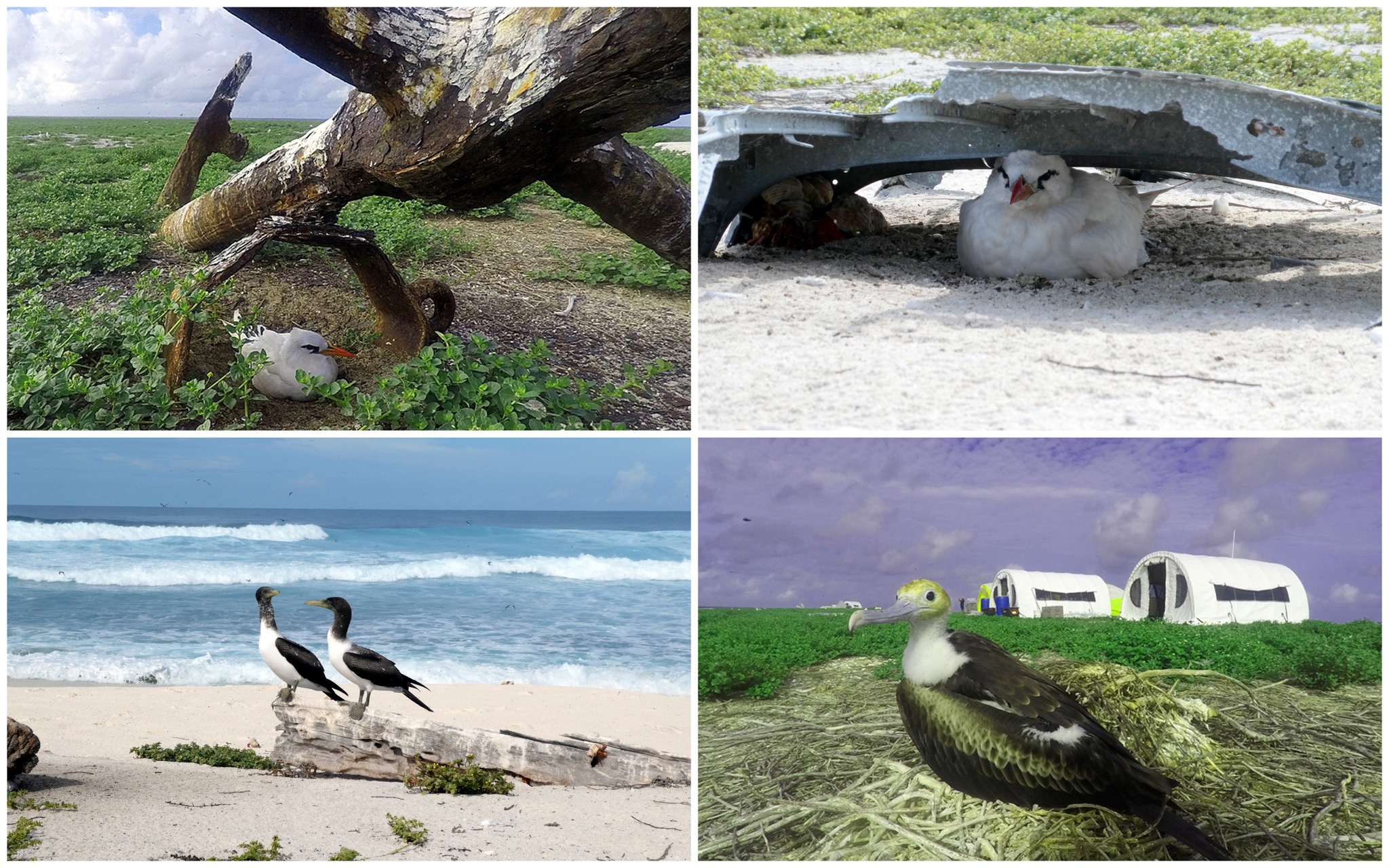
NAI’A first became aware of HAM radio and the idea of DXpeditions last August when we were contacted by the leaders of this group who were in search of a vessel and crew that could support their ambitious trip. Rob Barrel – one of NAI’As owners – immediately got onboard because this is just the kind of expedition he designed NAI’A for. With extensive knowledge of these kind of waters, with past experience leading similar expeditions (multiple trips to the Phoenix Islands to investigate Amelia Earhart’s disappearance and to create and support PIPA) and with a crew that is quite simply unsurpassable in strength and willingness to go the extra mile, Rob felt very confident that if anyone could do this, NAI’A could. And so, the partnership was ratified: NAI’A would take this DXpedition to Baker Island!
The logistics of this kind of a trip are staggering and had to be figured out in minute detail in the months preceding the trip departure in June 2018. Just organizing simple things like fuel, water, food and medical supplies takes on a whole new magnitude when you realize that Baker Island is 1,000 miles from American Samoa, the nearest port, which in turn is 800 miles from Fiji (all in all, we ended up covering 2,914 nautical miles!). We knew that we had to be 100% self-sufficient and that we had to have plans, back up plans (and maybe even back-up-of-back-up-plans!) for every conceivable situation. Fortunately, it was ‘all hands-on deck’ and a team of very capable individuals worked incredibly hard to give this DXpedition the very best chance of success. The NAI’A crew – boat, office and shore – are a formidable team and they proved their worth in the preparation for this trip. We’d like to offer a huge thank you to all the NAI’A team, especially Hussain – NAI’A’s land-based operations manager – and Kathy – our purchasing manager – for working all hours of the day and night in the final weeks leading up to D(eparture)-Day. Vinaka vaka levu!
After many months of remote planning (and a gazillion e-mails going back and forth with group leaders, Kevin and Don!), the day finally came to get this trip started. Logistically, we broke the trip into distinct ‘legs’. Our first mission would be to shift the boat, all of our crew and more than three tons of radio equipment, food and supplies - sent to us from the US - from Fiji to American Samoa: a full four days at sea. In American Samoa, we would then pick up our passengers and begin the second leg of our trip, up to Baker Island: a further five days at sea. Upon arrival at Baker our crew would assist in building a camp on the island, allowing our passengers to then largely remain onshore for the next ten days. After dismantling camp, we would move on to the final leg of our journey, a six-day sail back to Fiji (just in time to turn the boat around in three days and head to Tonga for our whale watching season!).
The first leg went very smoothly and whizzed by. A couple of the DXpedition team flew in to Fiji and joined us in Lautoka to help load their 3 tons of equipment on to the boat in something like a logical order for setting up camp at the other end! They then hopped on a plane to American Samoa where we would collect them and the rest of their team. Our crossing went exactly according to plan: the HAM team had kitted us out with a GPS tracker and were following our precise movements but were still amazed when they physically saw us turning the corner and coming into the port of Pago Pago at the exact hour anticipated! Pago Pago itself is nestled in the most beautiful of spots: a sheltered bay with green, lush mountains rising steeply from the ocean… Truly breathtaking and a lovely place to spend the next 24 hours! That afternoon, after loading on all the guests’ baggage and topping up our fuel tanks, Rob, Vanessa and Chad joined the team as they got together for a pre-departure meeting to finalize their plans for Baker Island. We must admit, a few confused glances were sent each other’s way as these incredibly smart gentlemen threw around terminology WAY beyond our comprehension! We’ll also confess we had a little giggle as we realized half the time they weren’t referring to each other by name but by ‘call sign’, their government allocated amateur radio IDs: Ned becomes AA7A, Tommi becomes HA7RY etc.! We were immersed in a whole other world, one we knew nothing about, and that is one of the things we LOVE about being a part of NAI’A: the chance to mix with people you’d never cross paths with otherwise and learn about totally alien subjects.
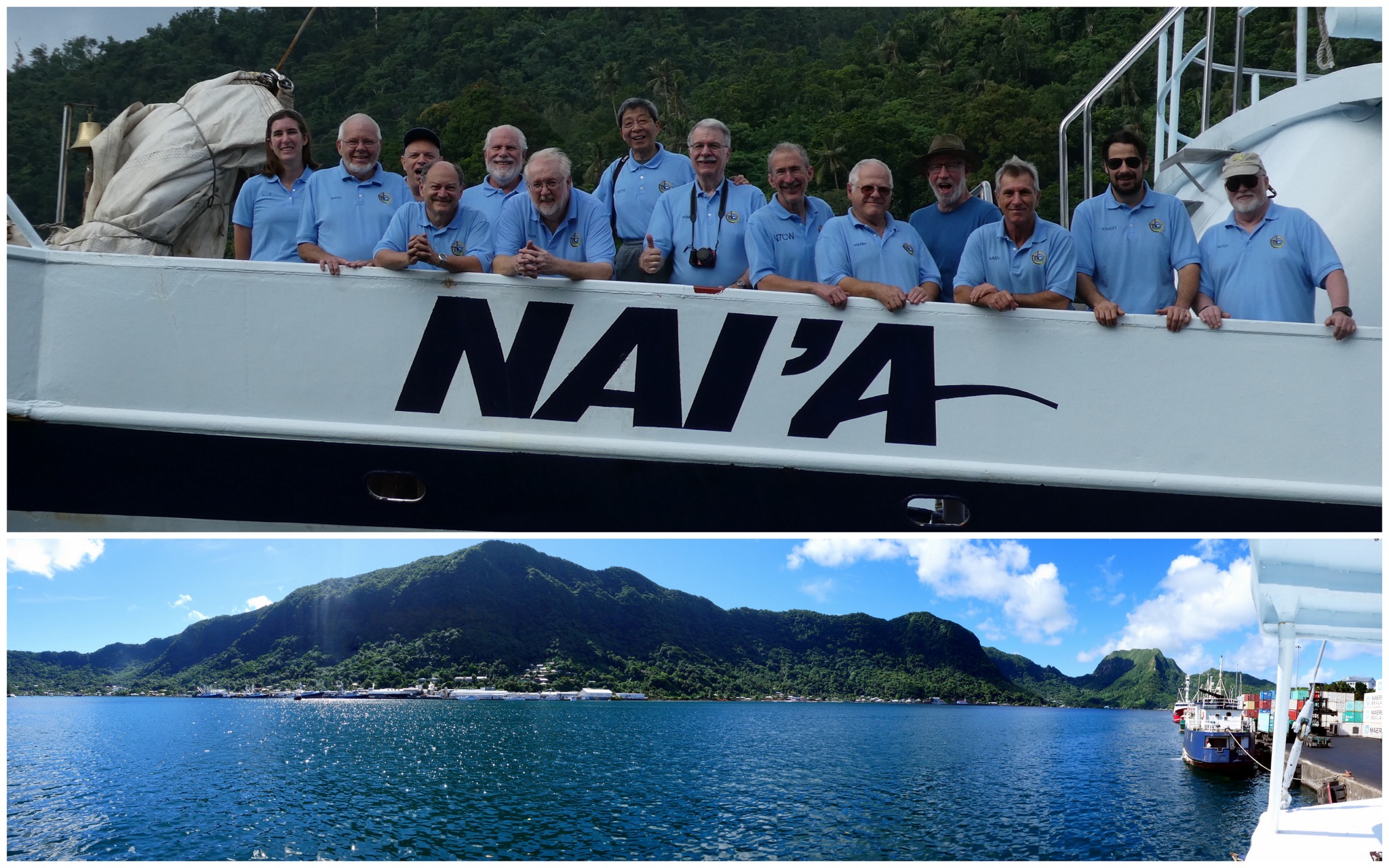
We continued to listen and learn in the coming days as we boarded the team and set off for Baker Island; as is the way with long sea journeys, there was a whole lot of time to sit around and chat! We were incredibly fortunate with the weather and sailing conditions; we really couldn’t have asked for calmer seas. And, so, we awoke on the fifth day with Baker in our sights: it is in an incredible feeling to reach land after many days at sea. And what a stunning spot! Gorgeous steep white sandy beaches with waves rolling on the shore, rising up to a green, scrubby island SWARMING with birdlife! Baker Island is home to 11 different species of bird: frigates, boobies and terns primarily and is the highest concentrations of Sooty Terns anywhere in the world. Allie conducted extensive research during her time on the island and estimated a population of AT LEAST seven million Sooty Terns alone! We felt incredibly fortunate to be some of the lucky few who ever get to experience such a natural phenomenon.
After sending out Rob and Johnathon to find a suitable skiff landing spot, now began the real challenge: offloading all the equipment and supplies and building a camp for our HAM guys to live and operate in for 10 days. As you can imagine, this involved an absurd amount of physical effort. That’s where our strong, tough Fijian boys are worth their weight in gold! The NAI’A crew took on pretty much all the physical labor: lifting, lugging, digging, hammering etc. This freed up the HAM team to really focus on the technical side of things: erecting their multiple enormous antennae, for example. It was incredibly hard going in the heat of the equatorial sun but, after two full days, the team were ready to move to the island and begin operations.
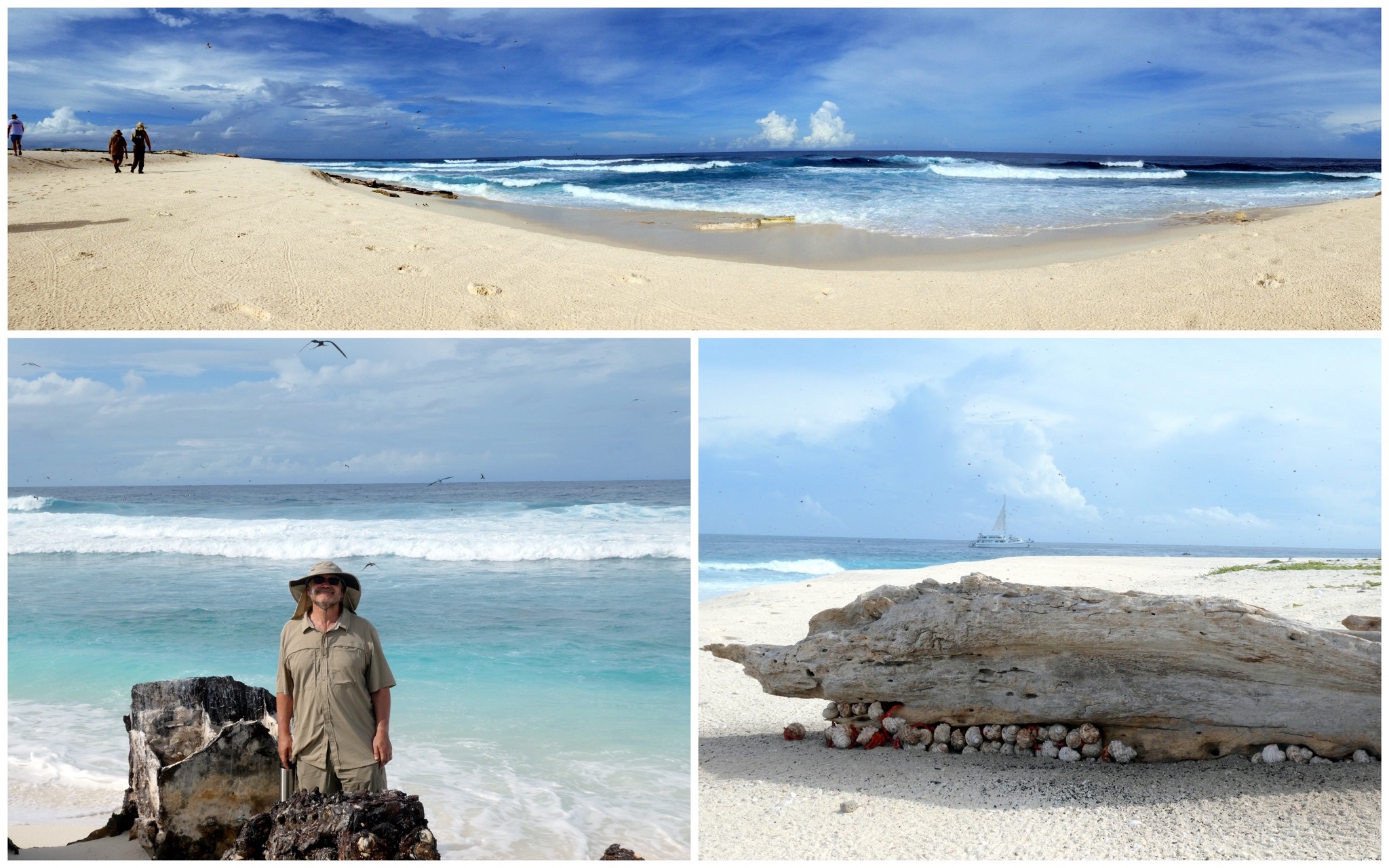
Soon, however, disaster struck. A huge squall came through in the dark of night (surprising everyone as apparently it NEVER rains on Baker!), wreaking havoc: men were physically holding up their tents as the wind howled and water was pouring inside. In the morning, it became apparent that critical equipment had been destroyed and their mission had been set back many, many hours. Morale in the camp was low but everyone forced themselves to crack on. These are the challenges that ultimately, when overcome, make such expeditions a success: to be able to say that despite all hell breaking loose, they STILL managed to continue operations and succeed in their mission.
The following couple of days were a tricky time. The team was physically and mentally exhausted, the heat was really take its toll on those not used to it and it was taking time to settle in to a productive routine. NAI’A was really able to step up here and help with the logistical side of things; our team are fantastic at finding solutions to the million and one little problems that inevitably crop up. We focused on providing the team with good, hearty nutritious meals (delivered through the surf twice a day!), making sure they had the brain power to focus on their technical operations. Slowly, slowly everyone began to find their flow and life settled into a simple but effective daily routine.
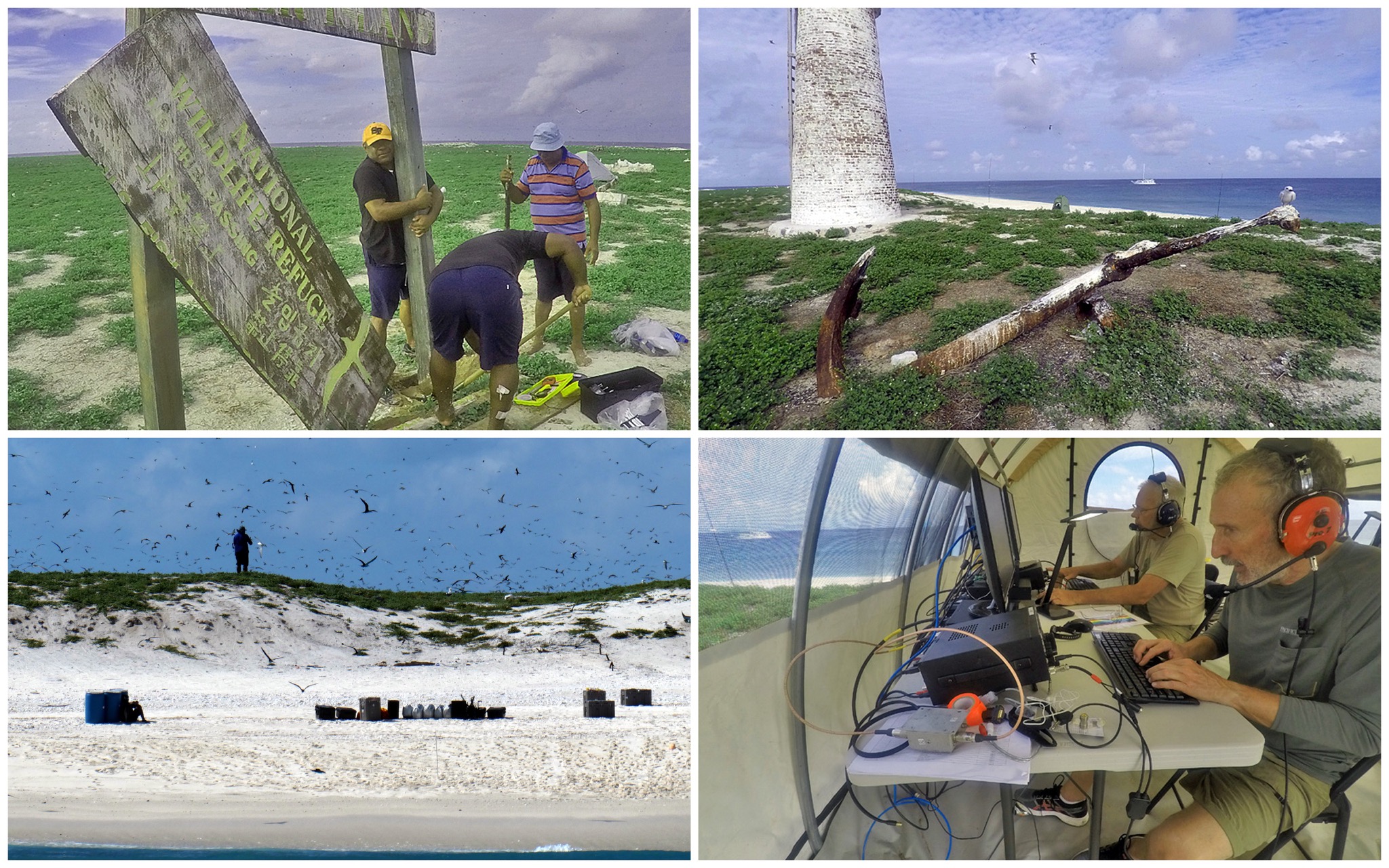
One of our main challenges was running people and supplies back and forth to the island. From the early planning stages, Rob’s biggest worry was getting the HAMs and their gear ashore through surf. Having stranded several TIGHARs on Nikumaroro for three days during the first expedition there in 1998 because surf closed out the channel, and having cancelled shore access for a day or two on each of the subsequent expeditions to the Phoenix Islands, he was very aware of the surf hazard. The channel built through the reef by the US military has long since disappeared. And even using said channel, the Navy lost 11 landing craft in WWII!
Rob knew that NAI’A’s big, comfortable skiffs would be too big to manage in breaking waves so he looked to the kind of boat that Australia’s Surf Livesavers use: small soft-bottom inflatables with 25hp motors. He bought the biggest small inflatable he could find and a brand-new motor exclusively for this expedition and his job throughout was driving back and forth to the beach with the DXpeditioners and their gear in his flash little red sportboat. His wife, Cat, pointed out that where many men during a mid-life crisis trade in their luxury Lexus or Merc for a spirited red Porsche, Rob bought a little rubber boat!
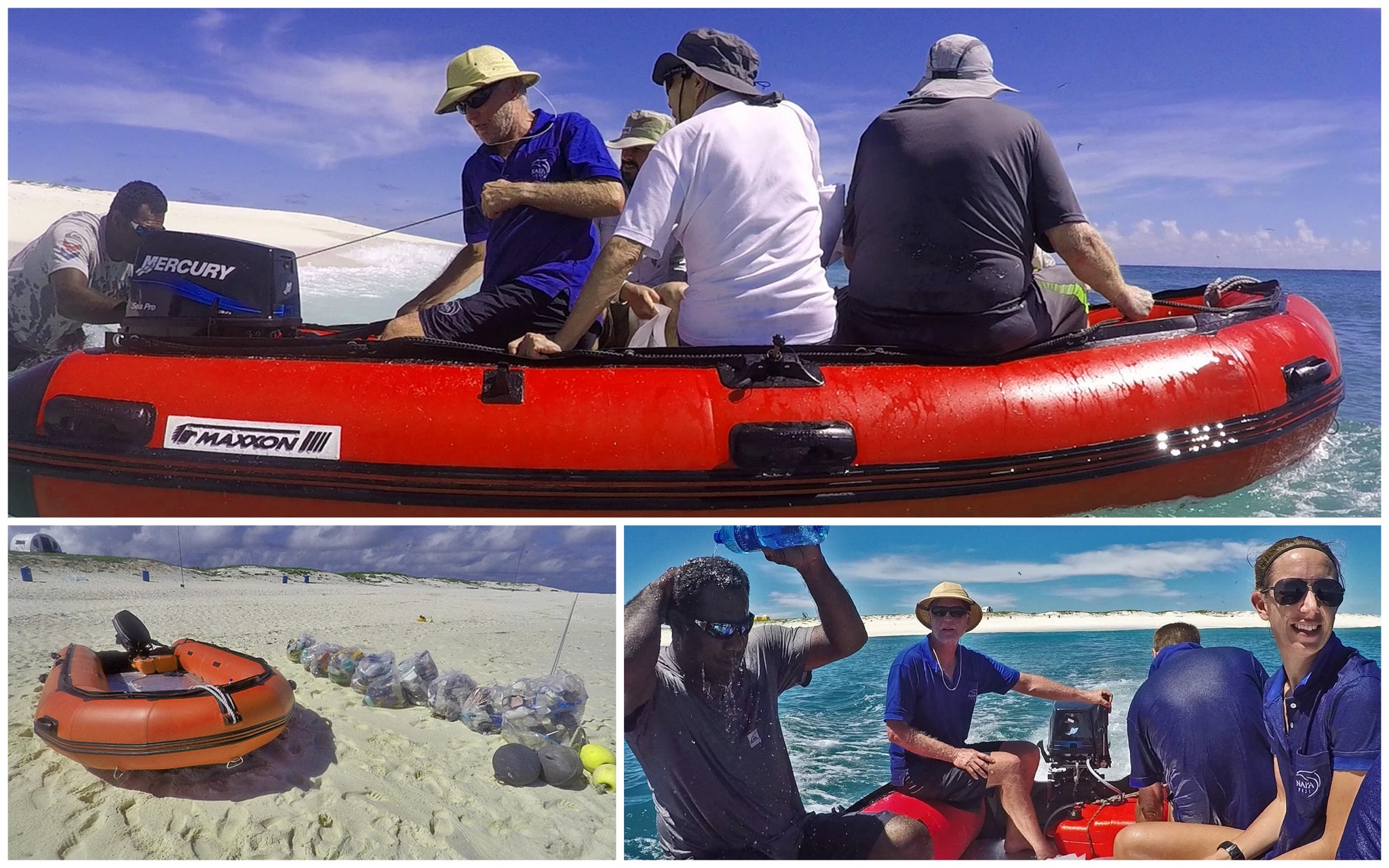
As usual, the NAI’A boat drivers were heroic. Before each landing Rob dropped them off just outside the surf line and they swam in. Then, waiting for the right wave, he ran the sportboat fast into the beach on the crest of the wave, yanking the tiller at the last second to initiate a turn while killing and tilting up the motor. The boys grabbed the boat and spun it around so that the bow could shoulder the next wave, then pulled it up the beach out of the surf line. Getting out was worse, because the boat was always heavy with people or gear, and involved careful timing so that the boys could push it out on the back of one wave giving Rob enough time and water under the motor to get it going before the next wave pushed the boat back ashore. During close to a hundred landings there were only two seriously close calls and in the end, everyone and their stuff got ashore and back to NAI’A safely – although quite often totally drenched!
While the majority of the team stayed on the island at night, the permit did not allow for all to do so. Therefore, we had a few of the guys switching out and spending time on the boat each day. This actually proved to be a winning strategy as it gave people time to get a good rest (sleeping solidly on the island with all the bird noise was near on impossible!), to enjoy a hot shower and to get much needed laundry done. Sunset drinks became a daily affair up on the sun deck: we’d often spot pods of dolphins going by and a couple claim they were witness to the elusive ‘green flash’.
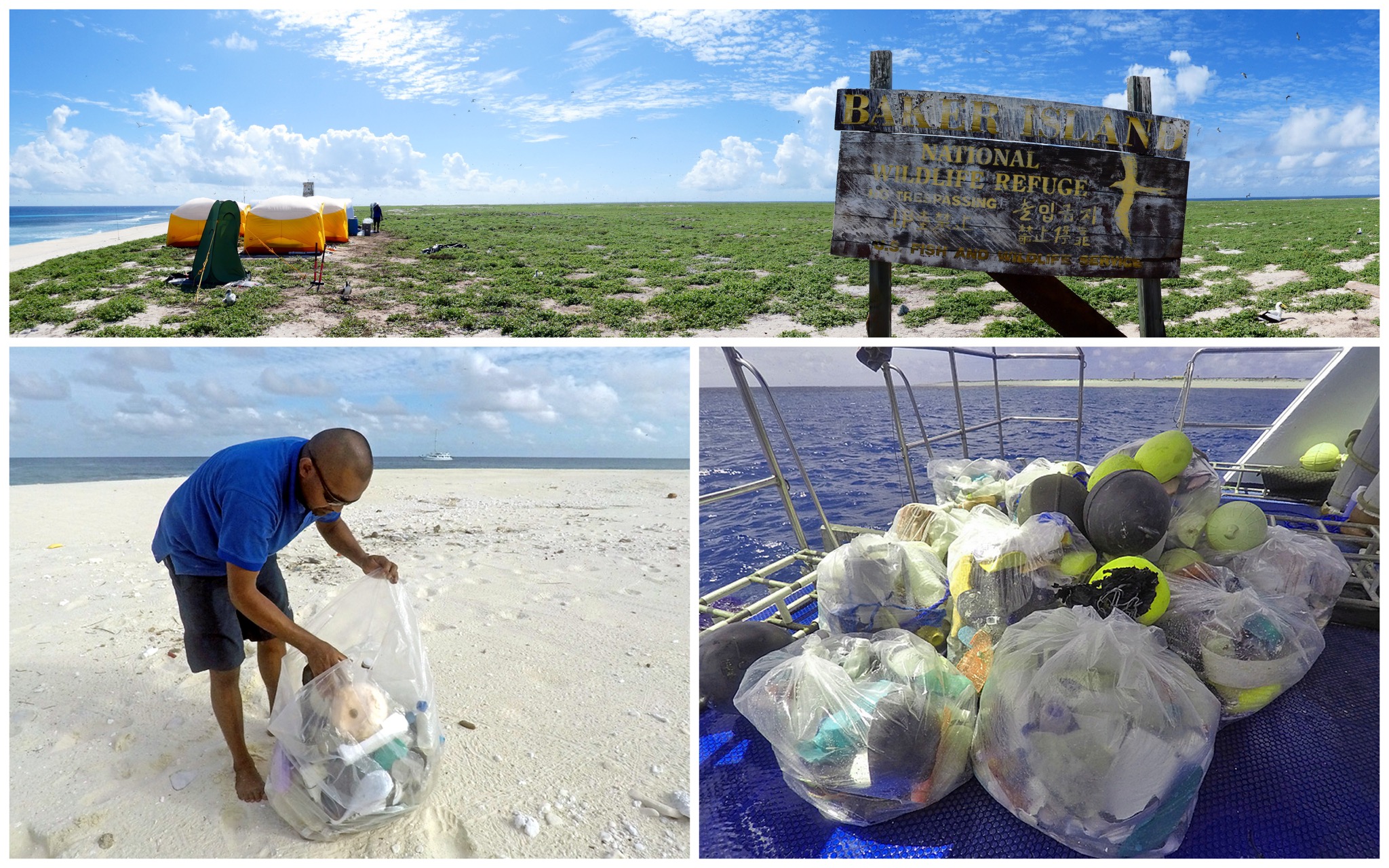
With a few hours to spare one morning, the NAI’A crew headed in to Baker and tackled a bit of a beach clean-up. We picked up hundreds of flip flops, bottle tops, toothbrushes, plastic bottles and so on. It’s very upsetting to see how much plastic washes up even here, in the middle of nowhere. We’ve always discouraged single-use plastic bottles on NAI’A but some stricter environmentally friendly changes will be coming into effect soon. Every little bit DOES help… Watch this space!
Two full days before the end of their time on the island, our HAM team reached their target of 60, 000 ‘QSOs’ (positive contacts with other HAM operators across the globe). Having hit their target, this DXpedition was an undeniable success: the pressure was off and everyone breathed a sigh of relief. The men continued to operate at full pace those final days, however: why not go above and beyond?!
And, so, we came to the end of our time on Baker Island and we got stuck in to the process of dismantling camp. Boy, was it a whole easier to tear it all down than it had been to put it all up! The team was practically swimming back to the boat: they were very keen for hot showers, good food and comfortable beds for the next six days back to Fiji!
Having got everyone and everything back onboard, we said our final goodbyes to Baker Island. It really is a special little place with an incredible history and it is expeditions like this that keep that history alive.
Comments
“Central Fiji has all the elements of the ultimate ocean wilderness: diverse creatures and habitat, nutrient-rich water, spectacular scenery and owners who respect it.”
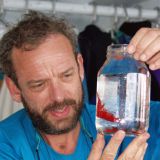
~ Dr. Greg Stone, Executive Vice President of Conservation International

